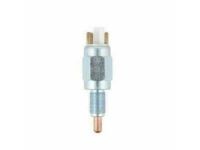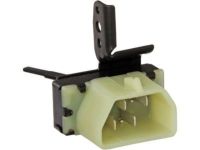

Why choose FordPartsGiant
- Devoted Service
At FordPartsGiant.com, we strive to make customer satisfaction our #1 goal by providing dedicated customer service. Our core values of success continue to demonstrate our loyalty by building dedicated relationships with all of our current and future customers. We are always ready to assist you with the slightest detail about your Mercury Bobcat parts and accessories.
- Reasonable Prices
We are the right online source for discounted prices on OEM Mercury Bobcat parts and accessories. Not everyone has the money to buy their vehicle quality parts, here at FordPartsGiant.com we make it economical to buy genuine Mercury Bobcat parts without sacrificing the quality or hurting your wallet.
- Swift Delivery
FordPartsGiant.com has centrally located distribution centers all across the United States. This gives you quick access to our discounted Mercury Bobcat parts when you need them. We offer our customers the convenience of having parts delivered straight to their front door. We are committed to having your Mercury Bobcat up and running in just a couple of days.
Popular Genuine Mercury Bobcat Parts
- Engine Parts View More >
- Lamps & Wiring Parts View More >
- Wheels & Brakes Parts View More >
- Fuel System & Manifolds Parts View More >
- Transmission Parts View More >
- Suspension & Steering Parts View More >
- Body Parts View More >
- Air Conditioner, Radios & Shock Absorbers Parts View More >
- Rear Axle & Drive Shaft Parts View More >
Shop Genuine Mercury Bobcat Parts with FordPartsGiant.com
The Mercury Bobcat, produced from 1975 to 1980, marked Mercury's debut into the subcompact car market as a successor to the Cortina. This vehicle was essentially a rebadged version of the Ford Pinto, with shared body design but distinguished by a unique grille, hood, and a more upscale interior. Assembled in various locations including Edison, New Jersey, Southwold, Ontario, and Milpitas, California, the Bobcat was available as a three-door hatchback and a three-door station wagon, but did not offer a two-door sedan variant. With a wheelbase of 94.0 in and dimensions of 163 in length, 69.4 in width, and 50 in height, the Bobcat was compact yet spacious. Its design featured a front-engine and rear-wheel-drive layout, ensuring satisfactory performance and maneuverability. Engine options included a 2.3L I4 and a 2.8L V6, both available with either a three-speed automatic or a four-speed manual transmission, achieving an output of up to 98 hp. The vehicle enjoyed its best sales year in 1979, largely due to its fuel efficiency. The Bobcat went through several design updates during its production run, with notable features like improved tail lamps, slanted back urethane headlamp buckets, and updated parking lamps introduced in 1977, and a major styling update in 1979. The Mercury Bobcat, with its genuine parts, innovative design, and luxurious interior, offered a comfortable and enjoyable driving experience in a compact package.
When it comes to top-class quality and functionality, original equipment manufacturer parts are without doubt the only choice. They undergo strict quality checks and are built to Mercury's factory specifications for easy installation. Here on our website, we provide the most competitively priced genuine Mercury Bobcat parts you can find. Our OEM Bobcat parts are backed by the manufacturer's warranty. Additionally, all orders placed with us benefit from our hassle-free return policy and swift delivery service.
Mercury Bobcat Parts Questions & Answers
- Q: How to adjust the neutral start switch on a Mercury Bobcat?A: To begin, chock the front wheels and jack up the rear of the car, supporting it on firmly based axle stands or positioning it over an inspection pit. Next, disconnect the downshift linkage rod from the transmission downshift lever. Apply some penetrating oil to the downshift lever shaft and nut, allowing it to soak for a few minutes. Then, remove the transmission downshift lever retaining nut and lift away the lever. Proceed by removing the two securing bolts of the neutral safety switch and disconnecting the multi-wire connector. Lift away the switch. To refit the switch, place it on the transmission unit and lightly secure it with the two bolts. Move the selector lever to the 'N' (neutral) position and rotate the switch. Insert a No. 43 drill into the gauge pin hole, ensuring it goes a full 0.48 in (12.30 mm) into the three holes of the switch. Fully tighten the switch securing bolts and remove the drill. Finally, refit the components in the reverse order of removal and verify that the engine only starts with the selector lever in the 'N' and 'P' positions.
- Q: How to removal and install A/C Accumulator,A/C Condenser,A/C Switch,Blower Control Switches,Evaporator and Heater Core on Mercury Bobcat?A: A dealer would be the best person to give air conditioners for repair, but a capable home mechanic could replace visually defective components after professionally evacuating the system. For access to A/C Switch, remove consolette screws, disconnect trim cover, release fixing screws and detach A/C Switch while disconnecting wiring, vacuum pipes and temperature lever control cable. First return the cable as instructed. By removing the A/C Switch one can get the Blower Control Switches. Blower motor is built into evaporator housing and access is through glovebox removal secured by four fixing screws. Glove box needs to be removed in order to access vacuum motors for various functions. Evaporator removal involves disconnection of battery, draining of cooling system and disassembly of numerous units. Similarly, combination valve and A/C Accumulator have particular steps of removing them that involve; disconnecting refrigerant lines and capping openings. Condenser removal entails activities like pulling out screws, splitting between refrigerant lines and detaching it from its frame structure. Right under the front fender on passenger side is where the A/C Accumulator is located hence demands doing such things as raising vehicle up off ground level then taking down roadwheel or wheel if you like calling it by that name. In refitting processes always ensure there are new O-ring seals on top of adding refrigerant oil into some parts with due diligence being discharged before any marked parts are removed or tested again before recharging at dealer's place following completion of dismantle erect operations.






































